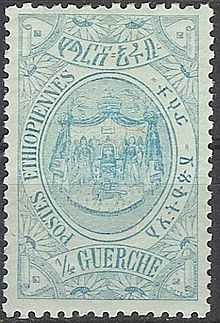Throne of Solomon

The Throne of Solomon refers to the throne of King Solomon in the Hebrew Bible, and is a motif in Judaism, Christianity and Islam. King Solomon made a great throne, which was fashioned of ivory and covered with gold. It was set with rubies, sapphires, emeralds and other precious stones that shone with the most brilliant, the most dazzling, the most fascinating hues and colors. Six steps led to the seat, and each step served to remind the king of one of the six special commandments that the kings of Israel were commanded to observe. On the first step a golden lion lay, facing a golden ox on the opposite side. On the second step a golden wolf faced a golden lamb. On the third step a golden tiger faced a golden camel; on the fourth a golden eagle faced a golden peacock; on the fifth a golden cat faced a golden rooster, and on the sixth a golden hawk faced a golden dove. Higher still, above the throne, a golden dove held a golden hawk in its beak.
Hebrew Bible
The term "throne of Solomon" does not occur in the Hebrew Bible; though Benaiah the son of Jehoiada blesses the elderly David saying "may the LORD... make his throne greater than the throne of my lord king David." (1 Kings 1:36). Otherwise the throne is seen as either David's or belonging to God himself; "Solomon sat on the throne of the LORD as king" (1 Chronicles 29:23). The design of the physical throne itself is described in 1 Kings 10:
18 Moreover the king made a great throne of ivory, and overlaid it with the finest gold. 19 There were six steps to the throne, and the top of the throne was round behind; and there were arms on either side by the place of the seat, and two lions standing beside the arms. 20 And twelve lions stood there on the one side and on the other upon the six steps; there was not the like made in any kingdom. JPS 1917
Judaism
A Jewish tradition holds that the throne was removed to Babylon, then Ahasuerus sat on the throne of Solomon.[1] Another tradition holds that six steps related to six terms for the earth.[2][3]
Christianity
The New Testament speaks only of the "throne of David," as in the angel Gabriel's message in Luke 1:32 in relation to the Davidic line, and notably the Gospel of Luke gives the descent of Jesus via Nathan (son of David), not Solomon. In religious tradition the Seat of Wisdom in Roman Catholic tradition is associated with Solomon, and in art, such as the Lucca Madonna (van Eyck), which portrays the Virgin sitting on the throne of Solomon.
A "Throne of Solomon" was also among the Solomonic objects of the Byzantine Court at Constantinople.[4][5]
Islam
The throne of Solomon featured both in Islamic commentary, and art, including mosque decoration.[6]
The concept has given rise to various geographical names:
- Ghasre Abu-Nasr (Abu-Nasr Palace) or Takht e Sulayman (Throne of Solomon), archeological remains in Shiraz, Iran
- Takht-e Soleyman District (بخش تخت سلیمان, meaning the "Throne of Solomon"), district in West Azerbaijan, Iran
- Takht-e Soleymān (تخت سلیمان, Takht-e Soleymān, "Throne of Solomon") archaeological site in West Azarbaijan, Iran
- Takht-e-Sulaiman Solomon's Throne (Urdu , Pashto : تخت سليمان, from Persian : "Solomon 's throne") peak in Balochistan
- Takht-e-Sulaiman, Sulayman Mountain, peak in Osh, Kyrgyzstan
- Throne of Solomon (Srinagar), Takht-i-Sulaiman, temple ruin near Dal Lake, Shrinagar associated with Ahmadi claims of Jesus in India.
The Peacock Throne of Shah Jahan was commissioned to underscore his position as the just king.
See also
References
- ↑ Alexei M. Sivertsev Judaism and Imperial Ideology in Late Antiquity 2011- Page 22 "The tradition that Ahasuerus sat on the throne of Solomon was already known by the mid-third century. ... On the title cosmocrator in Rabbinic literature, see Krauss, Paras we-Romi, 87–89; Shimoff, “Hellenization among the Rabbis,”184–85."
- ↑ Joseph Verheyden The Figure of Solomon in Jewish, Christian and Islamic Tradition 2012 Page 132 "Six steps lead up to the throne in reference to the six terms for the earth (Erez, Adamah, Arqa, Ge, Zia, Neshiah—Tebel is not included here), the six .. ... a king. it had six steps and it rose above these six steps, and it had six paths each with six steps, and on each step were two lions and one ...
- ↑ Shmuel Safrai, Peter J. Tomson The Literature of the Sages -2006 Volume 2 - Page 182 "The teachings of the Babylonian rabbis... the allegorical significance of the six steps to the throne of Solomon; the throne in captivity (1:12);"
- ↑ Richard Kieckhefer Magic in the Middle Ages 2000- Page 101 visited the imperial court at Constantinople and reported on the marvelous Throne of Solomon displayed there:
- ↑ Shaun Tougher The Reign of Leo VI (886-912): Politics and People - Page 124 - 1997 -"1" One of the most intriguing Solomonic objects kept at Constantinople was the throne of Solomon, which is named only by the Book of Ceremonies. 1" This throne was ... 103 For the Biblical throne see First Kings, 10-20."
- ↑ Finbarr Barry Flood The Great Mosque of Damascus: Studies on the Makings of an Umayad ...2001 - Page 85 "... manifestation of the golden vine-tree in such a context is, however, in connection with the fabled throne of Solomon."